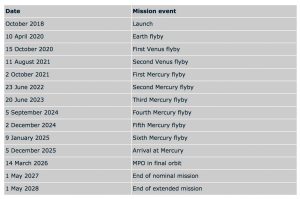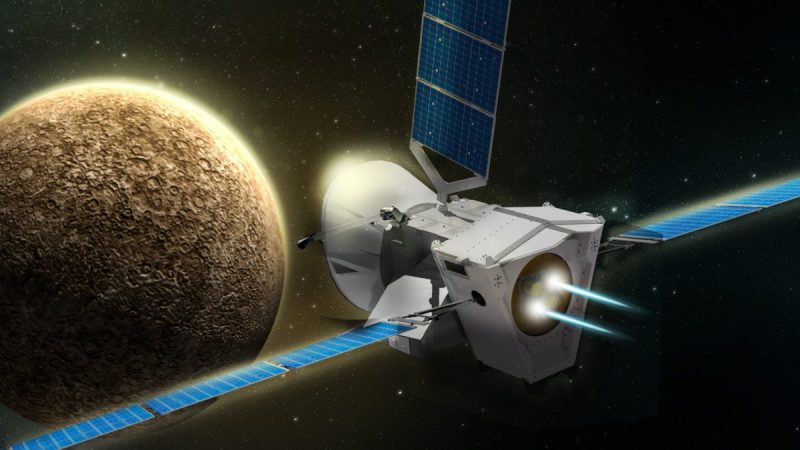The European Space Agency and Japan are Launching a Joint Mission to Mercury
September 5, 2018The European Space Agency and Japan Aerospace Exploration Agency will launch the BepiColombo mission––a pair of spacecraft that will travel together toward “the smallest and least explored terrestrial planet in our Solar System.”
The European-built Ariane 5 rocket will launch the ESA Mercury Planetary Orbiter and the JAXA Mercury Magnetospheric Orbiter which will both be housed in a larger transfer module during trip.
Liftoff to occur no earlier than October 19th at 10:45 PM local time in French Guiana. ESA will use the Guiana Space Centre launch pad just outside of the town of Kourou, a facility it shares with France. Following launch, the transfer module will deploy solar arrays and communications antennas for what will be a long journey toward the solar system’s innermost planet.
The BepiColombo mission will take over 8 years to complete. The orbiters will arrive at Mercury in 2025 to get begin their 1-year mission. After that year, ESA and JAXA will determine if they can extend the mission for another year.
The mission’s objective is a full-body scan of Mercury to finally get an idea of how planets with close proximity to a star evolve. This will include the architecture of the Mercury’s interior, its geological makeup, and craters that are scattered across the surface. The probes will also investigate the composition of the planet’s atmosphere and attempt to determine how its magnetic field was formed. The BepiColombo mission will also perform a test of Einstein’s theory of general relativity.
Mathematician and engineer Giuseppe Bepi Columbo was a professor at the University of Padua in Italy. Columbo is known as the “grandfather of the fly-by” after assisting NASA with calculations to achieve the third pass of Mercury with the agency’s Mercury 10 spacecraft in 1975. Columbo was the first to make acute observations of Mercury’s orbit and unique axis.

ESA Mercury Planetary Orbiter
-
cameras,
-
spectrometers (IR, UV, X-ray, γ-ray, neutron)
-
radiometer
-
laser altimeter
-
magnetometer
-
particle analysers
-
Ka-band transponder
-
accelerometer.
JAXA Mercury Magnetospheric Orbiter
-
magnetometer
-
ion spectrometerelectron energy analyzer
-
cold and energetic plasma detectors
-
plasma wave analyzer, and imager









